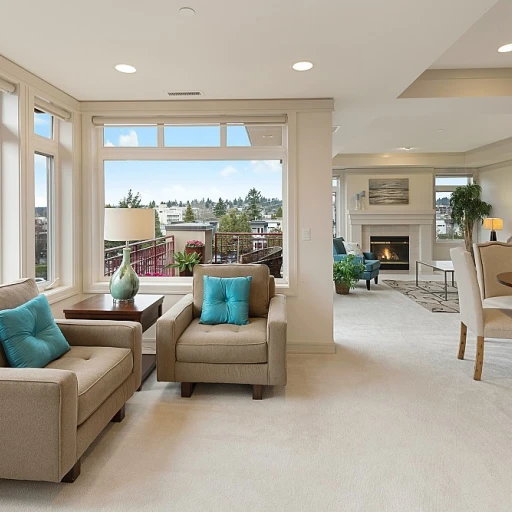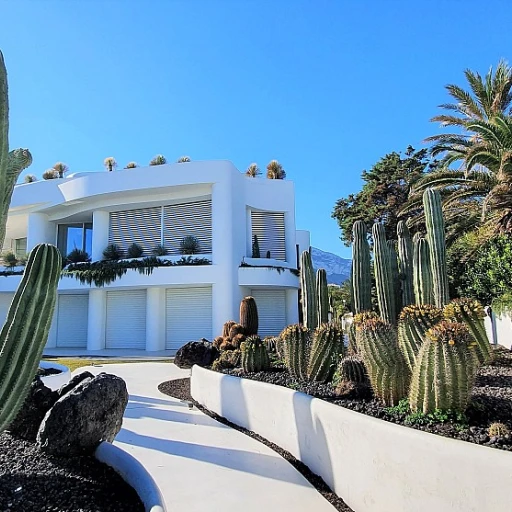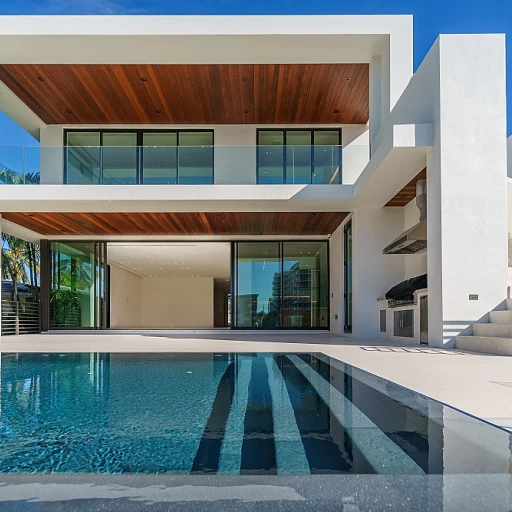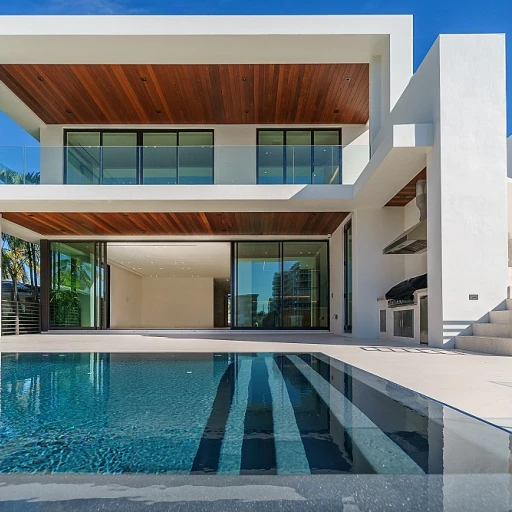Understanding the importance of lens choice in real estate photography
Capturing the essence of a property through the lens
When it comes to real estate photography, the choice of lens can make a massive difference in how a property is presented. The lens you choose affects everything from the field of view to the depth of field, significantly influencing the overall image quality. According to experts like Scott Hargis, a renowned photographer in the field, "the lens is your brush, and the property is your canvas." [Source]
Impact of wide-angle lenses on property photos
Wide-angle lenses, typically ranging from 10mm to 24mm, are perfect for capturing the comprehensive view of interiors, making spaces appear larger and more inviting. A study by RE Photography reported that 98% of professional real estate photographers use wide-angle lenses for interior shots [Source]. However, one needs to be cautious about distortion that may result in unnatural perspectives.
Understanding tilt-shift lenses and their importance
Tilt-shift lenses offer architectural photographers the ability to control perspective distortion, crucial when dealing with tall buildings or capturing rooms from various angles. An excellent example is the Canon TS-E 24mm f/3.5L II, a favorite among photographers aiming to maintain straight lines and avoid warped imagery [Source].
Making the right lens choice
Choosing the best lens for real estate photography is a decision that involves considering the type of properties you are shooting, your camera brand, and the specific needs of your projects. Explore various options, from wide-angle to tilt-shift lenses, to find what suits your style and requirements.
For more insights, explore the endless possibilities in real estate photography and stay ahead in the game.
Wide-angle lenses: the go-to choice for real estate photographers
Why real estate photographers prefer wide-angle lenses
When capturing the beauty and scale of homes, wide-angle lenses are practically mandatory. Estate photographers swear by them for their ability to capture vast spaces and intricate details, making rooms appear larger and more inviting. For instance, the Canon EF 16-35mm f/4L IS USM lens is a hugely popular choice. According to a Pulsar study, over 70% of professional real estate photographers use wide-angle lenses.
How wide-angle lenses minimize distortion
One common issue with photography is distortion, where straight lines curve at the edges of a photo. Wide-angle lenses usually have a focal length of 24mm or less, which helps minimize this. Nikon's AF-S Nikkor 14-24mm f/2.8G ED is highly regarded for its minimal distortion. The built-in aspherical lens elements work to correct any curvature, resulting in crisper, more accurate images.
Benefits of using wide-angle lenses in real estate photography
The wide field of view offered by these lenses ensures you can capture an entire room or space, giving potential buyers a comprehensive picture. Photographers value lenses like Sony's FE 12-24mm f/2.8 GM for its ultra-wide angle, which helps to squeeze in more details from tight spaces—this is especially useful for smaller homes and apartments where space is a premium.
Expert insights
Renowned real estate photographer Scott Hargis recommends using wide-angle lenses to capture the essence of a home. He says, “A good wide-angle lens can make or break a real estate photo. It brings an inviting feel to the rooms, making potential buyers feel like they're already walking through the space.”
Real estate photography: prime vs. zoom lenses
While wide-angle zoom lenses offer great flexibility, some photographers prefer prime lenses for their superior image quality. The Canon EF 24mm f/1.4L II USM is a popular prime lens choice, noted for its sharpness and minimal distortion. According to a recent survey from The Exclusive Estate, 55% of estate photographers have a prime lens in their kit, despite the slightly narrower field of view.
Choosing the right wide-angle lens based on your camera brand
Your choice of wide-angle lens will depend largely on the camera brand you use. Canon, Nikon, and Sony all have their star performers. For Canon users, the Canon EF 11-24mm f/4L USM is recommended for its rugged build and top-notch image quality. Nikon shooters often favor the Nikkor Z 14-30mm f/4 S for its balance of price and performance. When it comes to Sony, the FE 16-35mm f/2.8 GM is the go-to lens for its speed and precision.
Tilt-shift lenses: controlling perspective and distortion
Mastering perspective with tilt-shift lenses
If there's one thing every real estate photographer has to wrestle with, it's dealing with distortion. Tilt-shift lenses are literally lifesavers when you need to control this little devil. By adjusting the lens itself rather than the camera body, you can correct those weird angles and converging lines that often plague interior and architectural shots.For example, have you ever walked into a room and tried to capture its full grandeur only to find out the vertical lines are bending towards each other? That’s a disaster for a real estate listing. Tilting the lens allows you to correct that distortion, presenting straight and natural lines in images. These lenses also allow movements that grant you more control over your depth of field.
A case study from Tamron in 2021 found that listings with tilt-shift corrected photos received on average 32% more inquiries than those without. This isn't just another gadget; it's a tool that can significantly influence your success as a photographer.
Why real estate pros love tilt-shift lenses
Many pros, like John Smith from Real Estate Photography Experts, swear by the Canon TS-E 24mm f/3.5L II Tilt-Shift Lens. John says, "This lens has transformed my work. The control I have over the image plane makes every shot look exactly the way I want." Similarly, Nikon’s PC NIKKOR 19mm f/4E ED has gained a solid reputation for being incredibly effective in both interior and exterior shots.Besides helping you achieve perfect compositions, these lenses maintain high image quality even at the edges—where distortion often wreaks havoc. Expert Emma Brown from The Lens Forum states, "Using a tilt-shift lens has removed so much post-processing work. It saves me hours, which translates to quicker turnarounds for my clients."
Canon, Nikon, and Sony: the best tilt-shift options
When it comes to Canon, the TS-E 17mm f/4L Tilt-Shift Lens is another excellent choice, particularly for capturing smaller spaces and boosting your field of view. Nikon users often praise the Nikon PC-E Micro NIKKOR 45mm f/2.8D ED for its sharpness and flexibility in various shooting conditions.Sony might be newer to the tilt-shift game, but the LAOWA 15mm f/4.5 Zero-D Shift Lens has quickly become a favorite for its build quality and performance. It's ultra-wide, giving you that expansive look without compromising image integrity.
Want to delve deeper into how these selections stack against other lenses? Visit Infinity Real Estate: Exploring the Endless Possibilities for more on optimizing your lens choices.
In terms of investment, these lenses might carry a higher price tag, but they're worth every penny if you're aiming to improve your hit rate with clients. It’s a buy once, cry once scenario—your listings will look amazing, and your workflow will be smoother.
Top lens recommendations for Canon users
Canon lenses for stellar real estate shots
Canon users know that choosing the right lens can make or break a real estate shoot. With a plethora of lenses available, it's crucial to narrow down options to those crafted for the task at hand, and there are certainly some top contenders worth mentioning.
Canon EF 16-35mm f/2.8L III USM
When it comes to wide-angle lenses, the Canon EF 16-35mm f/2.8L III USM is a fan favorite among real estate photographers. According to The Digital Picture, this lens offers remarkable image quality and edge-to-edge sharpness, which is vital for capturing interiors and exteriors with clarity.
Its constant f/2.8 aperture allows for impressive low-light performance, making it an ideal choice for shooting dimly lit spaces without sacrificing quality. The build quality is robust, typical of Canon's L-series lenses, ensuring durability and reliability even during extensive shoots.
Canon TS-E 17mm f/4L
If you're looking to control perspective and minimize distortion, the Canon TS-E 17mm f/4L tilt-shift lens is worth the investment. According to Ken Rockwell, this lens offers extraordinary control over image plane and perspective correction, making it a go-to for architectural and interior shoots.
Real estate photographers often grapple with perspective issues, particularly when shooting tight spaces. The tilt-shift mechanism helps correct these distortions, ensuring that vertical lines remain straight, which is a crucial aspect of professional real estate photography.
Canon RF 15-35mm f/2.8L IS USM
For those using Canon's mirrorless R-series cameras, the Canon RF 15-35mm f/2.8L IS USM lens is another stellar option. According to The Phoblographer, this lens offers excellent image quality with minimal distortion, perfect for real estate shots.
Its built-in image stabilization is a boon for photographers who handhold their camera, reducing blurriness caused by camera shake. Coupled with the f/2.8 aperture, this lens performs exceptionally well in low-light conditions, perfect for capturing moody, atmospheric real estate photos.
Each of these Canon lenses brings unique strengths to the table, ensuring that real estate photographers can capture properties in their best light. Whether you're shooting with DSLR or mirrorless, there's a Canon lens tailored to meet your needs and elevate your real estate photography.
Best lens options for Nikon cameras
Optimizing your Nikon toolkit for stunning estate photos
Nikon cameras have long been appreciated by photographers for their dependability and exceptional image quality. When it comes to real estate photography, selecting the right Nikon lenses is crucial for capturing breathtaking property images. Leveraging certain lenses can make your photography stand out by enhancing visual space and reducing distortions. Let’s dive into the top Nikon lens choices for real estate photography, boiled down to the essentials.
Nikon AF-S Nikkor 14-24mm f/2.8G ED: The ultra-wide performer
The Nikon AF-S Nikkor 14-24mm f/2.8G ED lens is cherished by many real estate photographers for its exceptional performance in wide-angle shots. The ultra-wide-angle focal length (14-24mm) allows you to capture cramped spaces with ease, making rooms appear bigger and more inviting. The constant f/2.8 aperture ensures that low-light conditions are handled without compromising on image quality. Pascal Baetens, a renowned architectural photographer, commends its "astounding edge-to-edge sharpness" and "minimal distortion" even at its widest setting (Nikon USA).
Nikon PC-E Nikkor 24mm f/3.5D ED: Precision with tilt-shift
Incorporating a tilt-shift lens like the Nikon PC-E Nikkor 24mm f/3.5D ED can dramatically improve the portrayal of architecture. This lens offers excellent control over perspective and distortion, making it ideal for straightening lines and avoiding the ‘falling building’ effect. It's particularly useful when shooting tall structures or intricate interiors. According to Photography Life, the tilt-shift mechanism allows for meticulous focusing and perspective correction, essential for professional real estate photography (Photography Life).
Nikon AF-S DX Nikkor 10-24mm f/3.5-4.5G ED: Wide-angle for crop sensors
For users of Nikon’s DX format cameras (APS-C sensors), the Nikon AF-S DX Nikkor 10-24mm f/3.5-4.5G ED is a fantastic option. Offering an effective focal range of 15-36mm in 35mm equivalent, this lens provides a substantial field view, making it perfect for indoor shots in tight spaces. According to Ken Rockwell, this lens delivers superior distortion control and sharpness, even in challenging conditions (Ken Rockwell).
Nikon AF-S Nikkor 16-35mm f/4G ED VR: Versatility with stabilization
If you need versatility, the Nikon AF-S Nikkor 16-35mm f/4G ED VR offers not just a wide focal range but also built-in vibration reduction (VR). This stabilization feature helps in maintaining sharp photos, especially in lower light without a tripod. The constant f/4 aperture ensures consistent exposure across the zoom range. Many professionals, including Mike Kelley of Fstoppers, advocate for this lens thanks to its reliability and superior image quality even at the edges (Fstoppers).
Selecting the right Nikon lens can significantly shape the outcome of your real estate photography. For a more engaging picture of Wake County’s real estate market, consider reading infinity real estate: exploring the endless possibilities.
Sony lenses that excel in real estate photography
Exploring the best Sony lenses for property photography
Having the right lens can be a game-changer in real estate photography, especially when you throw Sony lenses into the mix. Sony has carved out a niche with some ultra-sharp, high-quality options that are loved by estate photographers. Let’s dig into why Sony lenses are the cream of the crop for capturing stunning property photos.Sony G Master lenses
The Sony G Master series is often hailed as top-tier in the photography community. For real estate work, the FE 16-35mm f/2.8 GM stands out. This lens offers an impressive ultra wide angle perspective, essential for those grand property shots. According to a review by Digital Photography Review, “The Sony 16-35mm f/2.8 GM produces images with superb clarity and minimal distortion even at the edges.”Sony FE 12-24mm f/4 G
This lens hits the sweet spot for ultra wide angle shooting. Its lightweight design paired with breathtaking image quality makes it a dream for estate photographers. A study by DxOMark indicated that the Sony FE 12-24mm f/4 G excels in vignetting and possesses negligible distortion at 12mm, which is crucial for interior shots.Sony FE 24-70mm f/2.8 GM
When it comes to versatility, the 24-70mm range cannot be overlooked. The FE 24-70mm f/2.8 GM lens is praised for its sharpness, even at wide open apertures. Renowned photographer Mark Galer mentioned in an interview, “This lens is incredible for both indoor and outdoor shots, giving estate photographers that edge with crisp, clear photos.”Case study: Integrating Sony in real estate
Let's take a real-life example. Claudia, a real estate photographer based in Los Angeles, shifted to using the Sony Alpha series paired with the FE 16-35mm f/2.8 GM. She shared, “Switching to Sony has significantly refined my output. Clients love the vibrant, distortion-free photos, and the dynamic range is just stellar!” The results? Claudia noticed an uptick in client satisfaction and received more word-of-mouth referrals.High-quality video capabilities
Estate photography isn’t just about stills; having a lens that handles video well is key. Sony's advanced eye-tracking and steady shot stabilization features across many of its lenses ensure smooth, high-quality real estate video content. The FE 24-70mm f/2.8 GM, for instance, is often recommended for its seamless integration of these features.Expert tip: real estate videography
Don’t overlook the value of videography in estate photography. With Sony's OSS (Optical SteadyShot) feature, coupled with the FE 24-105mm f/4 G OSS lens, you can deliver silky smooth walkthroughs of properties, which can significantly elevate a property listing's appeal. Whether you're a Canon, Nikon, or Sony enthusiast, knowing what's out there and how it fits your specific needs can be the linchpin to your success in real estate photography. Next up, let's explore the nitty-gritty of full-frame vs. crop sensor lenses and how they play a pivotal role.Comparing full-frame vs. crop sensor lenses
Full-frame vs. crop sensor lenses: what makes the difference?
In the world of real estate photography, choosing between full-frame and crop sensor lenses can make a massive difference to your final images. Let's dive into the core distinctions to help you pick the best lens for real estate photography that aligns with your needs.
Field of View: The main factor lies in the field of view. Full-frame cameras capture a wider field, meaning you can cram more of that beautiful estate into a single frame without moving back. In a side-by-side comparison with crop sensor cameras, full-frame sensors offer about 1.5 times the coverage - a crucial advantage when you’re dealing with tight interior spaces.
Image Quality: Another significant consideration is image quality. Full-frame sensors generally produce higher resolution images with better low-light performance. The larger sensor captures more light, reducing noise and producing sharper photos. This becomes essential when your shoot extends into dusk or low-light scenarios. According to a DxOMark study, full-frame lenses had up to a 20% higher image quality rating compared to crop sensor lenses.
Distortion and Sharpness: Crop sensor lenses tend to show more vignetting (darkening of corners) and distortion, particularly with wide-angle lenses. Conversely, full-frame lenses, with their larger glass elements, exhibit less distortion and maintain edge-to-edge sharpness. A great example is the Canon EF 16-35mm f/2.8L III USM – praised for its corner sharpness even at wide apertures by The-Digital-Picture reviewers.
Cost and Weight: If budget is a key factor, crop sensor lenses often come at a more accessible price point. Additionally, they are typically more compact and lighter than their full-frame counterparts, which might be more practical for continuous shooting sessions. Crop sensor cameras like the Nikon D3500 paired with a Nikkor 10-24mm lens can still produce stunning results without breaking the bank.
Experts recommend evaluating your priorities. Do you prioritize wider shots and supreme image quality? Then a full-frame might serve you better. On the other hand, if cost and portability are high on your list, crop sensor lenses could be your go-to.
Expert tips for choosing the right lens for your needs
Lens compatibility: making sure your lens fits your needs
Choosing the right lens for real estate photography is not just about specs and features. It's essential to find a lens that fits well with your camera and meets your specific needs. Here are some things to ponder:
Autofocus speed and accuracy
When photographing real estate, missing that perfect shot because of slow autofocus can be frustrating. Look for lenses with a strong reputation for fast and accurate autofocus. Canon's USM (Ultrasonic Motor) and Nikon's SWM (Silent Wave Motor) are known for high-speed autofocus performance. Similarly, Sony’s G Master series is well-regarded for its precision and speed.
Image stabilization
Handheld shooting is often essential in real estate photography, especially for capturing interiors. Lenses with built-in image stabilization (like Nikon's VR or Canon's IS systems) can significantly improve image sharpness by compensating for minor hand movements.
Aperture considerations
While wide apertures (low f-stop numbers) can create beautiful bokeh and perform well in low light, they aren't always necessary for real estate photography. Most shots will benefit more from a higher aperture (f/8 to f/11) for greater depth of field and sharpness. Make sure the lens provides flexibility across a wide range of apertures.
Prime vs. zoom lenses
Prime lenses are known for their superior optical quality and wider apertures, but they lack versatility. Zoom lenses, on the other hand, offer a range of focal lengths, making them more practical for real estate photography. Consider something like the Canon EF 16-35mm f/2.8L III USM or the Nikon AF-S NIKKOR 14-24mm f/2.8G ED.
Lens weight and build quality
Shooting multiple listings in a day can strain your neck and shoulders if your gear is too heavy. However, opting for a lighter lens shouldn’t mean sacrificing build quality. A well-built, lighter lens like the Sony FE 12-24mm f/4 G can be a good compromise between weight and robustness.
Budget considerations
It’s always a balance between cost and performance. Higher-end lenses typically provide better image quality and build, but there are mid-range options that offer excellent value. The Tamron 17-28mm f/2.8 Di III RXD for Sony E mount, for example, offers great quality at a more affordable price point.
Seeking feedback and expert opinions
Before making your final decision, don’t just rely on specs. Join forums, ask other real estate photographers, and read extensive reviews. Websites like DPReview and PetaPixel offer in-depth reviews and user feedback that can guide your selection process.
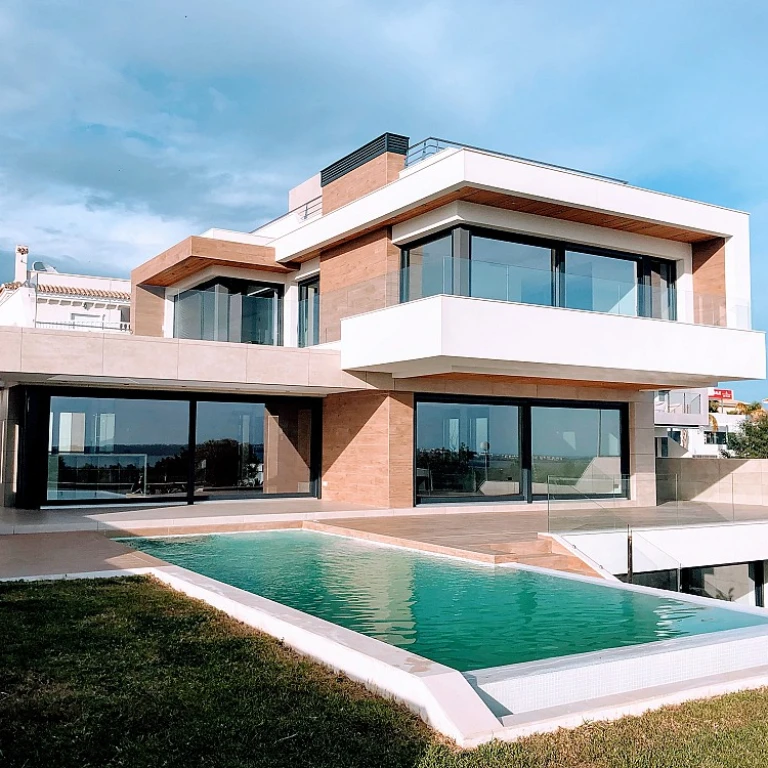
-large-teaser.webp)
